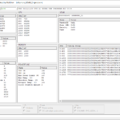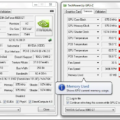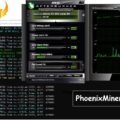

How to unlock Core Voltage in MSI Afterburner
From the context menu of the MSI Afterburner program, select Run as administrator. Go to the Settings > Basic location and check the Unlock Voltage Control checkbox. Now save the changes by clicking Apply & OK.

The changes you made will be applied only after restarting MSI Afterburner. In the window that opens, agree to restart the application. Now check if you can change the Core Voltage value. The slider should already be available and active.

You can go to the C:\ Program Files (x86)\ MSI Afterburner folder and find the MSIAfterburner.cfg file. Open the configuration file using the pre-installed Notepad program, for example. See the best text editors for Windows 10.

In a text editor, change the value of line #35 or the UnlockVoltageControl parameter to 1. Close the MSI Afterburner program completely, if it was running, and open it. This may not work if the manufacturer has set a limitation.

Also, in the folder C:\ Program Files (x86)\ MSI Afterburner\ Profiles you need to find the configuration file MSIAfterburner.cfg. Similarly, change the value of UnlockVoltageControl parameter to 1. Press Ctrl+S to save the changes.
The Core Voltage parameter allows you to manually adjust the GPU core voltage. For security reasons, it is blocked in the settings of MSI Afterburner program. Unqualified use of this parameter can lead to irreversible consequences.
It can be unlocked directly in the settings of the program itself. Or, if necessary, in the configuration file using Notepad
To apply the changes, it is very important to completely restart the program. Then the Core Voltage slider will become active.
Useful features
It is possible to change the MSI Afterburner interface in the program. Many people like the old style of the program:

The interface of the Default MSI Afterburner v2 Skin is shown below.

It may seem inconvenient that you have to open the program every time to apply overclocking. In this case you can apply the Apply overclocking at system startup setting. But you should do it only if you are sure that the frequencies are working.

It is also very convenient to save your settings to profiles and then apply them as needed. To do this, under Profile, click on the icon and select the profile number.

Later, to apply the settings, just click on the number.
The Windows icon is located under the Start Up label. If you put it in active mode, MSI Afterburner will start up together with the operating system.

The Statistics Center creates a separate window with the data when you click on the Detach button.
Reduce the intensity
Msi afterburner does not show monitoring
If you are using your main computer with a main graphics card in the motherboard to mine ETH, just add and don’t use or – this will make it relatively smooth to work at your computer while the graphics card is mining.
Of course the hash rate will be lower, otherwise you can’t have both a high hash rate and fast work at your computer at the same time.
If your computer is still slowing down, you can extremely reduce the load on the video card. To do this, specify:
means that the card will only operate at 50% of its capacity.
Find the optimal values for your graphics card architectures. They all have different values.
When overclocking is not recommended
- The older it gets, the worse it gets — No amount of overclocking will help an old graphics card start pulling modern games. And the more time has passed since its release, the less you can feel the effect. There are many reasons for this: outdated technologies, small amount of video memory, excessive voracity and resource exhaustion. Which, if you try to overclock, can easily lead to failure.
- Cheap video card — relatively cheap video cards are not designed for heavy games at all. Their task is to allow the user to watch videos, perform office work and surf the Internet. For them, overclocking will practically not help, and even be harmful, due to the simple design and massive savings on board components and cooling.
- Video cards on laptops — in any laptop, even a gaming one, everything is done for the sake of size and energy efficiency — thin cases, small radiators of cooling systems, dense layout on the board. During overclocking, the system generates additional heat, with which the cooling of the laptop often cannot cope and is forced to limit its performance.
- Computer newbie – If you are not very PC savvy, there is a good chance that your computer’s performance will slow down. In fact, the user must understand what he is doing and why, be aware of the risks and be prepared for various consequences.
Effective Cooling
How to use msi afterburner and keep your video card “toned”.
To activate manual change of the variable, click on the gear icon next to the Fan Speed slider.
Enables manual control of the cooler speed.
If you want the system to adjust the fan speed itself based on the current temperature of the video card, switch to Auto by clicking on the Auto icon.
Activate automatic fan speed control.
In the “Cooler” settings section, you can specify the refresh rate of the parameter and maximize cooling efficiency by negating fan rattle.
Change the update period of the current fan speed data.
How to use MSI Afterburner
How to properly configure the msi afterburner program
Before starting to work with the program, users should be aware that incorrect actions can ruin the video card. Therefore, the instructions should be clearly adhered to. Automatic overclocking mode is also undesirable.
MSI Afterburner supports NVIDIA and AMD graphics cards. If you have another manufacturer, which is unlikely, you will not be able to use the tool. You can see the name of your card at the bottom of the program (highlighted in yellow).
Launching and configuring the program
Launch MSI Afterburner through the shortcut that was created on the desktop. We need to set the initial settings, without which many actions in the program will be unavailable. Check all the checkboxes that can be seen on the screenshot. If your computer has two video cards, then add a checkmark in the “Synchronize settings of identical GPUs” field. Then click “OK”.
On the screen you will see a notification that the program needs to be restarted. Click “Yes”. You do not need to do anything else, the program will be restarted automatically.
Core Voltage
By default, the Core Voltage slider is locked. However, after we have set the basic settings (Check the Unlock Voltage box), it should start to move. If it is still not active after restarting the program, it means that this function is not supported by your video card model.
Core Clock And Memory Clock
The Core Clock slider adjusts the frequency of the video card. In order to start overclocking, you need to move it to the right. The slider should be moved little by little, in increments of no more than 50 MHz
During the overclocking process, it is important not to let the device overheat. If the temperature rises above 90 degrees Celsius, the video adapter may break down
Next, test your video card with a third-party program, for example, VideoTester. If everything is OK, you can repeat the procedure and move the slider by another 20-25 units. We do this until we see defects in the image on the screen
Here it is important to detect the upper limit of values. When this is determined, reduce the frequency of the units by 20 to eliminate defects
Do the same with Memory Clock (Memory Frequency).
To check the changes we have made, we can play some game with high requirements to the video card. In order to monitor the performance of the adapter, we set up the monitoring mode.
Monitoring
Go to “Settings-Monitoring”. Select the necessary indicator from the list, for example, “GP1 load”. At the bottom check the box “Show in Overlay Screen Display”.
Next, add the other indicators to be monitored one by one. Additionally, you can customize the monitor display mode and hotkeys. To do this, go to the “EDM” tab.
Cooler settings
Note that this function is not available on all computers. If you decide to overclock your graphics card in newer models of laptop or netbook, you will simply not see the cooler tab there. Although it is generally not recommended to overclock the graphics adapter on portable devices.
For those who have this section, check the “Enable software user mode” checkbox. The information will be displayed in the form of a graph, which shows the video card temperature at the bottom and the cooler speed in the left column, which can be changed manually by moving the squares. Although it is not recommended to do this.
Saving settings
At the final stage of video card overclocking we have to save the made settings. To do this, click the “Save” icon and select one of the 5 profiles. It is also necessary to use the “Windows” button to launch new settings at system startup.
Now go to the “Profiles” section and select your profile there in the “3D” line.
If necessary, you can save all 5 settings and load the appropriate one for each case.
What is important to know and understand in the process
Next, to understand how to overclock your video card to the max, you need to know:
By “a little” we often mean not even tens but units of MHz and the peak value of overclocking is gained at the expense of these units, and the frequencies are interrelated, both in a good and bad sense; Overclocking (or rather overheating, voltage increase and other related nuances) can damage the video card (and not only it) and/or reduce its lifetime;
There should be no image distortion anywhere and, ideally, never; Temperatures should be within normal limits, which is regulated by the appropriate slider and / or user auto-mode, which will select the speed of the cooler, depending on the temperature during overclocking and testing; It may be that the card is overclocked only by one of the parameters (ie, only by memory or only by the processor), and when you change another parameter starts problems – this means that overclocking is possible only by this value, ie, Core Cloc
And, of course, it’s worth saying the following.
Safety
It is legitimate to ask whether this is dangerous. After all, we are increasing the performance tested and recommended by the manufacturer. This is not entirely true. Sometimes it happens that manufacturers themselves recommend to overclock a video card a bit when they realize that they have “cheaped out” and set the values too low.
Even when overclocking is not recommended by the manufacturer, it can still be done. All modern graphics cards are protected by various technologies, the point of which boils down to the following: when it overheats, it simply shuts down and resets the overclocking values to the original level. The same thing will happen if you overdo it and set the acceleration values too high. The computer will reboot and reset the video card settings you made.
Why is “curve editor” better than moving a slider?
When adjusting the video card chip frequency by means of sliders you can’t control the voltage, which is set in automatic mode for the current frequency, which always leads to limit stops and constant “sawing”:
MINUS: high consumption, high temperatures, fps drop. PLUS: some synthetics “digest” this behavior and produce better results.
When adjusting h/o the editor, you can always find a voltage where the chip frequency will stay at the same value and decrease only when certain temperature steps are exceeded:
MINUS: it takes some time to find the right voltage for the required frequency. PLUS: lower consumption, lower temperatures, stable fps.
When working with the “curve” there are cases when part of the frequencies after fixed remains at the top and as a consequence the voltage you have fixed “fails”, this can be leveled in two ways.
In most videos, this is done by initially lowering the entire “curve” and then setting the desired frequency/voltage:
The way I use (habit) – through “selection+Shift”: the entire area that is above the point you are looking for is selected with Shift + LKM pressed, then the Shift key is released and any point in the selection goes down, then click “apply” and everything falls into place:
Changing the video card driver version
There may be a conflict with the drivers for the video card and another version will be able to unlock the sliders – the old or the latest version. You can view the version in Control Panel, section Administration – Computer Management – Device Manager (right-click on the video card – Properties – Driver).
After installing MSI Afterburner, users often observe that the sliders, which in theory should move, are at minimum or maximum values and cannot be moved. This is probably the most popular problem when working with this software. Let’s find out why sliders do not move in MSI Afterburner.
How to overclock a video card
Stages:
- Slightly increase the Core Clock (MHz) value, leaving the Memory Clock (MHz) value unchanged;
- Click the check mark on the bottom right below the sliders;
- Run a game/movie/special application for testing the load of video cards, for a long time (at least an hour) and observe the temperature value of the graphics processor, as well as image distortion (this includes color skews, textures sticking out of somewhere in the game and other “oddities”), as well as other oddities, such as game crashes, freezes, refreshing (blinking) of the image, restarting the driver (usually a notification pops up) and so on;
- If everything went well and you did not see any of the above problems, then save the achieved value to the profile;
- Increase the Core Clock (MHz) value a little more, leaving the Memory Clock (MHz) value unchanged;
- Repeat all the following steps, increasing and maintaining the frequency until the operation is no longer stable or the temperature is critical. If you encounter a problem, go back to the last successful Core Clock (MHz) value and proceed to step two.
What the Power Limit option does?
Every graphics card has its own threshold of power consumption (TDP). The higher it is, the more electrical energy is consumed per unit of time and the more heat is generated. That’s why more powerful graphics cards have higher power consumption and more powerful cooling systems are installed on them to dissipate the generated heat.
The Power Limit parameter allows you to increase or decrease the maximum power consumption of the video card. It should be increased when overclocking, because in order to squeeze more out of the card than its standard capabilities, it needs more power.
If you reduce the Power Limit, you will not only reduce the performance of the graphics card, but also make it cooler. For many people it is not a secret that the lower the temperature at which the graphics card operates, the longer its lifetime.
The Power Limit parameter in the MSI Afterburner program is used to control the power consumption of the video card. It should be increased when overclocking the graphics card, and decreased to slow it down and reduce its operating temperature.












No Comments